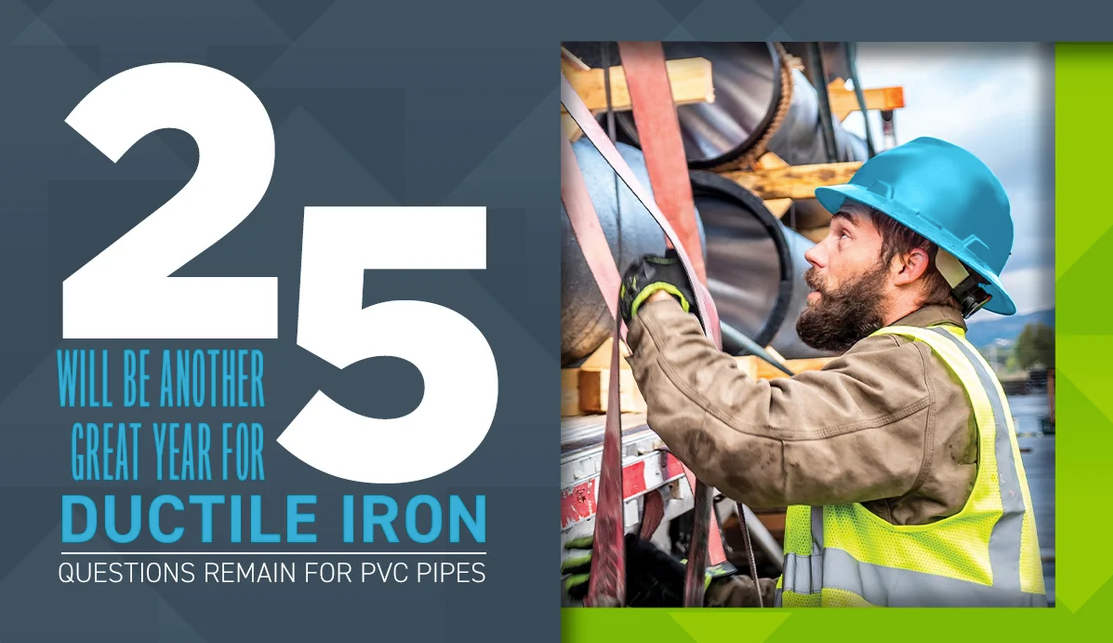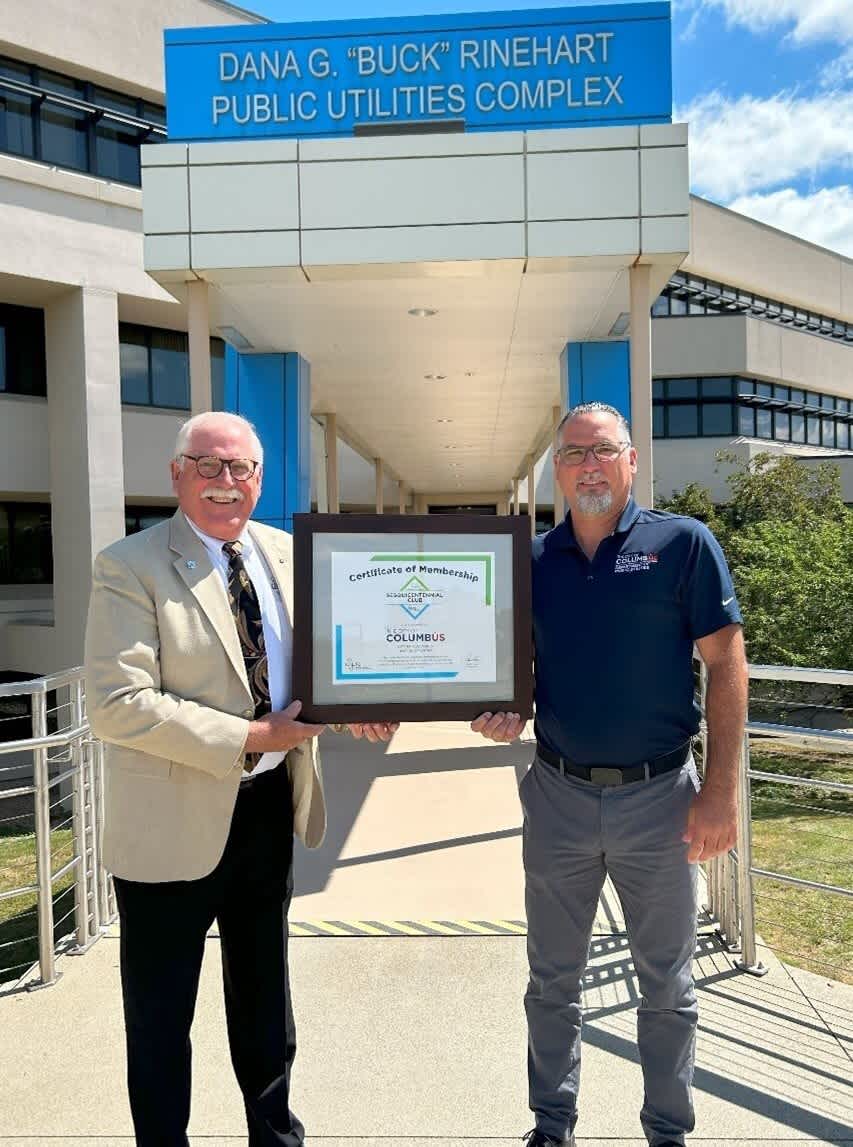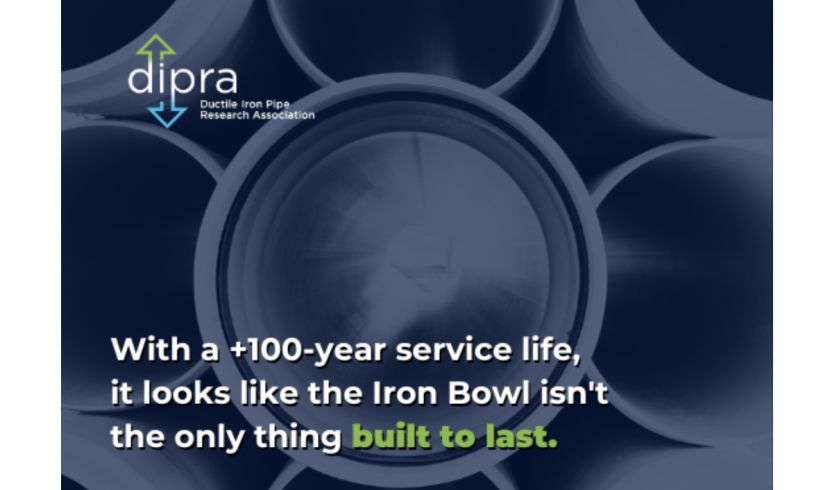
Life Cycle Cost Analysis Helps Water Professionals Select the Best Pipes for Infrastructure Projects
Aug 4, 2017
We at DIPRA expect that the LCCA will continue to be a useful tool for utility and other professionals involved with water infrastructure projects.
With so many factors to consider when deciding on the right pipes for water infrastructure projects, the Ductile Iron Pipe Research Association (DIPRA) is proud utility officials and professional engineers Life Cycle Cost Analysis (LCCA) research that will help them through the decision process. There are more than 1 million miles of pipes in the U.S., and the EPA estimates that 4,000 to 5,000 miles of water mains are being replaced each year. With many pipes nearing the end of their service lives over the next quarter-century, there’s a lot at stake for the professionals charged with overseeing these projects.
Researchers at the University of Michigan (UM) released the LCCA at the 2016 American Society of Professional Engineers (ASCE) conference. One year later, with the 2017 ASCE conference underway, DIPRA offers a reminder of the study that serves to help professionals determine the life cycle costs that figure into pipeline material choice for infrastructure projects. Members of the public who will be served by these projects may see a large price tag reported through their local media without a clear explanation of everything that needs to be considered to come up with that amount. But determining the best pipe to use for a project must be about more than dollars and cents for only the purchase of the pipe material. Because everyone is keenly aware of tight public budgets, the UM study serves as an important tool for determining the best materials for the job overall. The model, for example, looks at project factors such as:
- Location of the job site;
- Bare pipe costs;
- Total length of pipe;
- Diameter of the pipe;
- Project life span;
- And service life.
These are all critical factors. The location of a job site is important because engineers have to consider what kind of soil or terrain the pipes will be laying in or running through. Pipe size affects delivery capacity and pumping efficiency, the former for the amount of water and pressure needed to serve specific, local requirements, and the latter for energy cost savings. Then there is the project life span and the service life of the pipes being considered. Well, some pipes last longer than others, so it behooves those overseeing projects to ensure the pipes they use will last long into the future, meaning 100 years or more.
When the UM study was released, Carol C. Menassa, PhD, of the University of Michigan Civil and Environmental Engineering Department, and lead researcher of the project, said:
“It is important to consider more than one factor in selecting a pipeline material. With this new tool, the true value of the pipe, as an asset, can be understood, allowing for investment to be made in a good way.”
The LCCA was the primary objective of the UM research paper published by ASCE, and it compared the two most widely used pipe materials: Ductile Iron Pipe and Polyvinyl Chloride (PVC) plastic pipe. In a press release announcing the study and model, the researchers noted:
“Results of the research show that while PVC pipe may have initial cost benefits, Ductile Iron Pipe is the more cost-effective material over the pipeline's service life. Of note, there is a sharp rise in a cost break-even graph analysis of the two pipe materials due to the shorter service life of PVC pipe, which then requires replacement.
“Because PVC pipe has a limited performance history, the University of Michigan research team conducted an extensive literature review on reported service lives of both PVC and Ductile Iron Pipe. From the studies, the research team set service lives for PVC pipe at 50 years, and Ductile Iron Pipe at 100 years. Users of the LCCA model, however, can make adjustments to test any service life option. Other findings of the University of Michigan study showed that Ductile Iron Pipe has a lower environmental impact, based both on the production and operation phases of the alternatives, and the rate of pumping across all pipe diameters has the highest impact on cost.”
We at DIPRA expect that the LCCA will continue to be a useful tool for utility and other professionals involved with water infrastructure projects. The more data and information available, the better informed their decisions will be. We know how vulnerable our communities become when they don’t have access to safe, clean drinking water or reliable methods for transporting wastewater. Pipes must last for generations, and professionals want to select the right pipes for the job. We believe the UM study is a valuable resource for infrastructure material planning and procurement.






